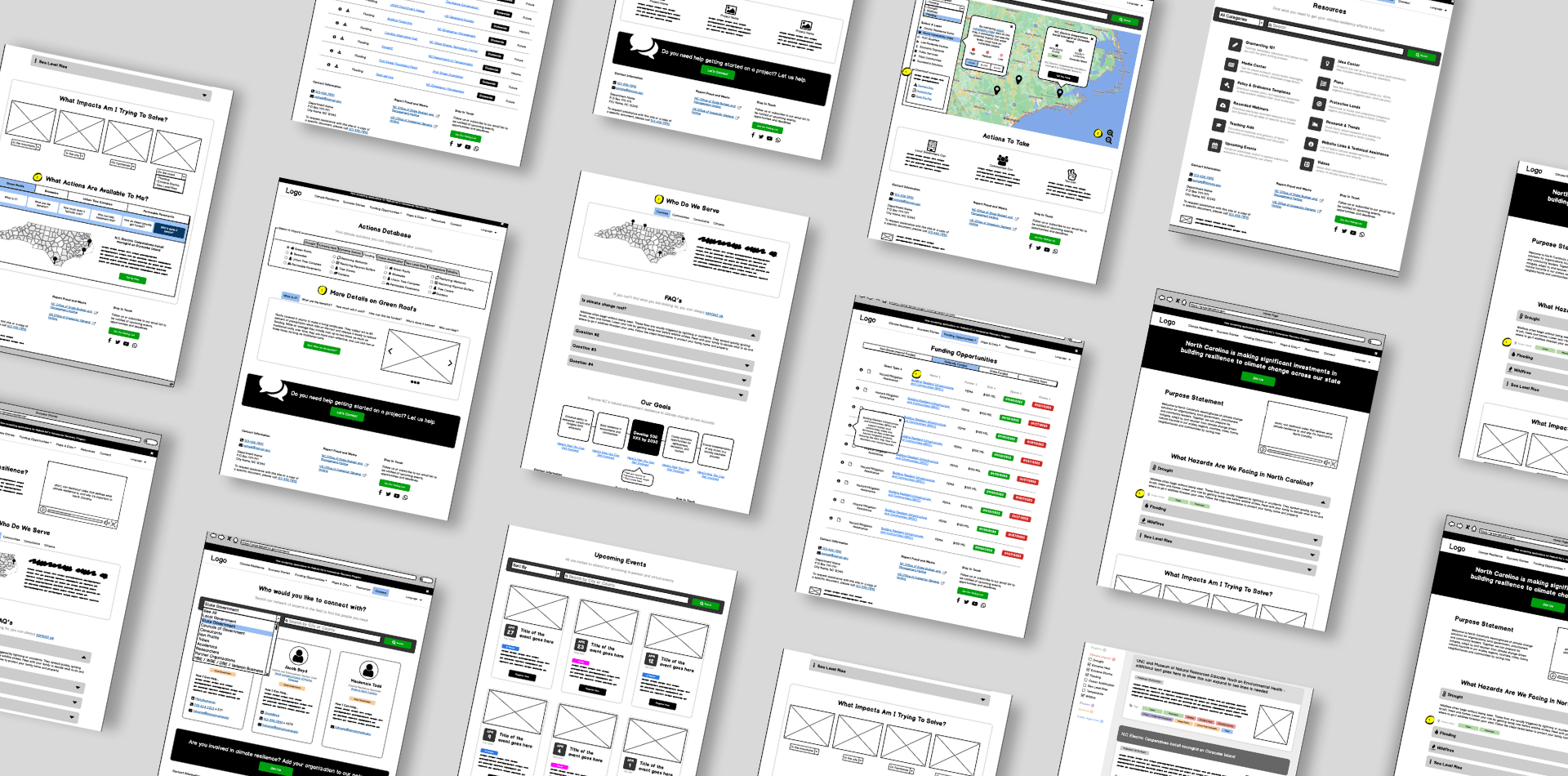Menu
Why Choose Us?State of North Carolina

In June 2022, US Climate Alliance retained the Usman Group to conduct user experience research in collaboration with the N.C. Department of Environmental Quality and the N.C. Office of Recovery and Resiliency to conduct user experience research and develop a strategic plan for the structure, functionality and governance of a clearinghouse website to help communities across North Carolina plan and better respond to future extreme-weather events caused by climate change.
US Climate Alliance enlisted the Usman Group team for our expertise in market research, website design, UX research, and digital marketing. Moreover, our background in the private sector and non-profit arenas, and the diverse voices and training our individual team members brought to the project, measured up to US Climate Alliance’s profile of the ideal vendor.
In the wake of 2018’s devastating Hurricane Florence, North Carolina Governor Roy Cooper established the North Carolina Office of Recovery and Resiliency (NCORR) to lead the state’s efforts in rebuilding smarter and stronger. At that time, many eastern North Carolina counties had yet to recover from two storms in two years, which brought flooding and extensive damage to many of the same communities.
Created to focus on long-term disaster recovery, NCORR manages nearly $1 billion in grant funding from the U.S. Department of Housing and Urban Development (HUD) for disaster recovery and mitigation efforts aimed at making North Carolina communities safer and more resilient from future natural disasters.
To accomplish this, NCORR plans to launch an online Climate Resilience Clearinghouse to address climate-related risks in all communities across the state—especially those that are most vulnerable—as well as provide local governments and community leaders with solutions that mitigate and safeguard against the hazardous effects of climate change.
We were tasked with uncovering the needs and wants of NCORR’s diverse audience—all residents of North Carolina—with a focus on the equitable inclusion of underserved and underrepresented members of North Carolina communities who are most vulnerable to the environmental and economic impacts of climate change.
Our detailed discovery process included:
Our findings from our five-month engagement with NCORR informed the design of visual prototypes of how the Clearinghouse website could operate. This included:
Stakeholders in this project included local government staff (comprising scientists and practitioners), tribal governments, community organization leaders, regional councils of government, state government resource managers, and nonprofit organizations focused on more equitable representation.
Our team interviewed more than 25 individual stakeholders (via Zoom and Microsoft Teams) over four weeks. Transcriptions from each stakeholder interview were then summarized and organized into a table to easily identify patterns. We grouped our insights into four major principles (see chart below).
We shared our findings and insights on a biweekly conference call with the nearly two dozen members of the Climate Resilience Clearinghouse Steering Committee. Their feedback was essential to developing our UI/UX recommendations—that is, what the user experience would look like and how it would function—and gain buy-in from the project’s ultimate decision makers.
The final product is excellent and a great example of how a state can approach building a climate toolbox. Having worked on something similar for the State of Maine, I deeply appreciate what a challenge it is to build a useful toolkit for constituents to take climate action.
U.S. Climate Alliance
We organized our recommendations for the overall approach and development of the Clearinghouse into five key categories:
Experience the NC Resilience Exchange, a valuable resource that helps local and state leaders easily navigate the wealth of climate resilience information available.
